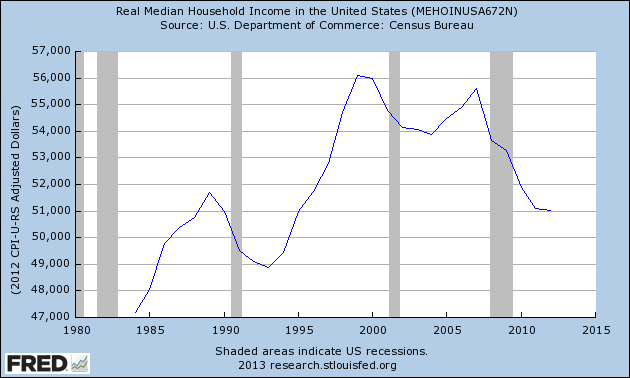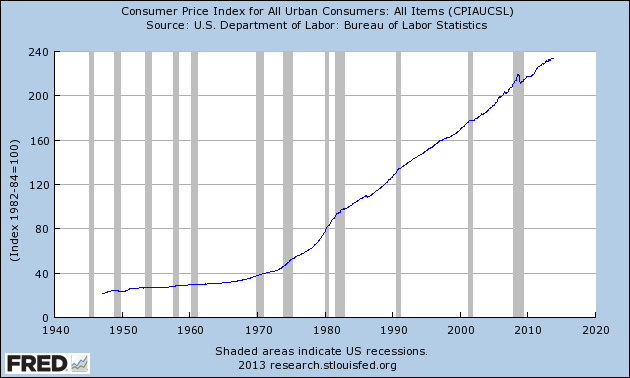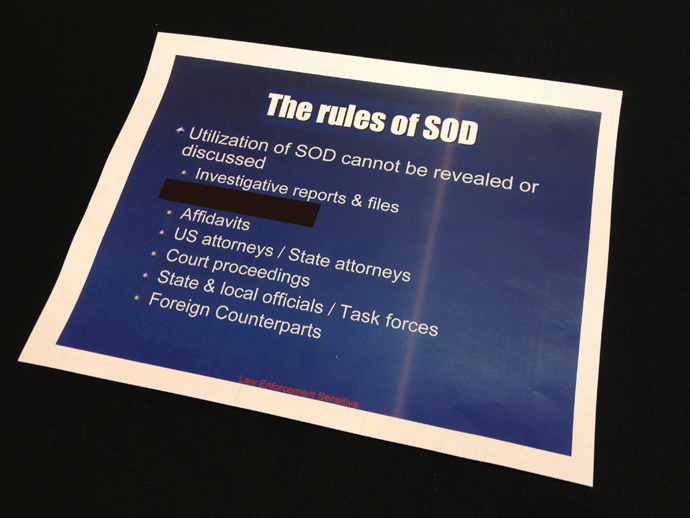Of the 8 “most important ever” FOMC decisions in 2013, this one is undisputedly, and without doubt, the 8th. As Jim Reid summarizes, what everyone wonders is whether today’s decision by the FOMC will have a bearing on a few last-minute Xmas presents around global financial markets. No taper and markets probably breathe a sigh of relief and the feel-good factor might turn that handheld game machine into a full-blown PS4 by Xmas day. However a taper now might just take the edge off the festivities and leave a few presents on the shelves. Given that the S&P 500 has pretty much flat-lined since early-mid November in spite of better data one would have to say that some risk of tapering has been priced in but perhaps not all of it. Alternatively if they don’t taper one would expect markets to see a pretty decent relief rally over the rest of the year. So will it be Santa or Scrooge from the Fed tonight at 2pm EST?
Heading into today’s FOMC, Asian equities have recovered from a soft opening to trade with a fairly upbeat tone. S&P 500 futures are trading 0.2% higher as we type, and the Nikkei is outperforming (+2.0%) helped by a higher USDJPY. Japanese export data for November was better than expected (+18.4% YoY vs +18.0% expected) which is helping sentiment there, even if imports soared too, leading to the biggest Japanese trade deficit ever. China’s seven-day repo rate is up 124bp today to 6.4%, in its biggest jump in six months which also takes the rate to its highest level since June 2013. The rate spike has been attributed to a number of factors including the approaching end of year, recent acceleration of rate liberalization reforms and the PBoC who did not add liquidity to the banking system earlier this week. Elsewhere the Reserve Bank of India held rates constant at its policy meeting, against expectations of a third successive rate hike to fight inflation.
The latest German IFO number yielded little surprises with the headline coming in as expected but bund futures saw a brief move higher after the German debt agency announced that the federal government plans to issue just EUR 205bln in debt, ex-linkers, compared to EUR 247bln this year. Also of note the 3-month Euribor Interest rate fixed at 0.298% vs. Prev. 0.298% after seeing consecutive rises in recent sessions. Today, as was the case yesterday, the Euribor strip has been bull flattening, as the rising trend noted since the beginning of December has dissipated, with yesterday seeing the first rise in Eurozone excess liquidity for some weeks.
Turning to the day ahead, the German IFO survey, UK employment data and the BoE’s minutes will be the main focus in Europe. November Housing starts will be released at the start of the US session before the FOMC’s policy announcement at 2pm EST. Bernanke’s final scheduled press conference follows half an hour later.
Finally, there is no POMO today, but there is a double POMO tomorrow.
Overnight news bulletin summary from RanSquawk and Bloomberg
- All eyes and ears await Bernanke’s penultimate FOMC meeting due later and whether or not the Fed will opt to commence the beginning of tapering or wait until Q1 2014. For a full Fed preview please click here.
- The latest German IFO release provided markets with very little as it came in alongside expectations.
- GBP is the outpeformer for this morning’s session following the UK ILO data which came in at 7.4% against expectations of 7.6% and resulted in an aggressive steepening of the UK curve.
- Looking ahead for the session there is the release of the US Housing Starts, Building Permits, weekly DoE inventories, US 5y note auction and the widely anticipated Fed rate decision.
- Treasuries steady as market waits FOMC decision on interest rates and possible tapering at 2pm in Washington; Bernanke’s last press conference as Fed chief scheduled for 2:30pm.
- 10Y yields near levels seen at Sept. meeting, when Fed chose not to scale back asset purchases; expectations for such a move today are split
- The Fed has decided to delay imposing limits on leverage at eight of the biggest U.S. financial institutions until a global agreement is completed, according to two people briefed on the discussions
- Bank of Japan officials see significant scope to boost JGB purchases if needed to achieve their inflation target, according to people familiar with the discussions
- U.K. unemployment fell to 7.4% in the three months through October, lowest level since April 2009 and moving toward 7.0% threshold at which BOE said it will consider raising rates
- Policy makers said further appreciation of pound could hamper Britain’s economic recovery, according to minutes of BOE’s Dec. meeting
- Germany’s Ifo institute’s business climate index rose top 109.5 in Dec., strongest in 20 months, from 109.3 in Nov.
- Australia’s central bank Governor Glenn Stevens said the board has maintained an “open mind” on whether it needs to cut interest rates further as it sees signs low borrowing costs are supporting spending
- Ukrainian anti-government protesters demanded to know what President Viktor Yanukovych had ceded to seal $15b of Russian financial aid and a one-third discount on energy imports.
- Sovereign yields mixed. EU peripheral spreads widen. Nikkei gains 2% while Shanghai Composite little changed. European stocks and U.S. equity index futures rise. WTI crude and gold little changed, copper falls
US Calendar Event Calendar
- MBA mortgage applications, cons n/a (7:00)
- Housing starts, cons 954k (8:30)
- FOMC rate decision, cons 0.25%; pace of bond purchases, unch at $85bn (14:00) followed by press conference (14:30)
- Sale of US$35bn 5y notes (11:30)
Market Re-Cap
All eyes and ears await Bernanke’s penultimate FOMC meeting due later and whether or not the Fed will opt to commence the beginning of tapering or wait until Q1 2014. This has led to somewhat cautious trade once again in Europe with volumes reflecting the fact that few are willing to take a position into the final main event of 2013. None the less a 2.0% gain overnight in the Nikkei 225, supported by news that the BoJ is said to see significant room for ramping up its bond purchases has resulted in higher stocks in both UK and Europe with technology names leading the advance.
The latest German IFO number yielded little surprises with the headline coming in as expected but bund futures saw a brief move higher after the German debt agency announced that the federal government plans to issue just EUR 205bln in debt, ex-linkers, compared to EUR 247bln this year. Also of note the 3-month Euribor Interest rate fixed at 0.298% vs. Prev. 0.298% after seeing consecutive rises in recent sessions. Today, as was the case yesterday, the Euribor strip has been bull flattening, as the rising trend noted since the beginning of December has dissipated, with yesterday seeing the first rise in Eurozone excess liquidity for some weeks.
Meanwhile, the UK curve has steepened aggressively after the UK ILO unemployment rate for December came in at 7.4%, below expectations, and moving ever closer to the BoE’s threshold for an adjustment to monetary policy, this in turn has led to GBP out performing its counterparts in the forex market. The actual BoE minutes were broadly in-line showing once again that the MPC voted unanimously for rates and the APF to remain unchanged.
Asian Headlines
Chinese FDI (Nov) Y/Y 2.4% vs. Exp. 1.1% (Prev. 1.2%); Jan-Nov FDI rose 5.48% Y/Y.
China’s Mofcom said retail sales are to grow by around 13% this year from a year ago and that it sees exports maintaining relatively steady growth in December, but added that they can’t be overly optimistic about Dec. exports. (Newswires)
Japanese Trade Balance (JPY)(Nov) M/M -1292.9bln vs.
Exp. -1351.1bln (Prev. -1090.7bln, Rev. -1092.7bln)
– The largest deficit on record for the month of November.
RBI Repurchase Rate (Dec 18) 7.75% vs. Exp. 8.00% (Prev. 7.75%)
– RBI Reverse Repo Rate (Dec 18) 6.75% vs. Exp. 7.00% (Prev. 6.75%)
– RBI Cash Reserve Ratio (Dec 18) 4.00% vs. Exp. 4.00% (Prev. 4.00%)
EU & UK Headlines
German IFO Business Climate (Dec) M/M 109.5 vs Exp. 109.5 (Prev. 109.3)
– IFO Current Assessment (Dec) M/M 111.6 vs Exp. 112.5 (Prev. 112.2)
– IFO Expectations (Dec) M/M 107.4 vs Exp. 106.5 (Prev. 106.3)
IFO economist Wohlrabe says expects German Q4 growth of 0.3% and growth could accelerate to 0.5% in Q1 2014.
UK ILO Unemployment Rate 3-Months (Oct) 7.4% vs. Exp. 7.6% (Prev. 7.6%) – lowest since Feb. 2009
UK Claimant Count Rate (Nov) M/M 3.8% vs Exp. 3.8% (Prev. 3.9%)
UK Jobless Claims Change (Nov) M/M -36.7K vs Exp. -35.0K (Prev. -41.7K, Rev. -42.8K)
– Average Weekly Earnings (Oct) 3M/Y 0.9% vs Exp. 0.8% (Prev. 0.7%, Rev. 0.8%).
– Weekly Earnings ex Bonus (Oct) 3M/Y 0.8% vs Exp. 0.9% (Prev. 0.8%)
UK Employment Change (Oct) 3M/3M 250K vs Exp. 165K (Prev. 177K)
The BoE December minutes showed the MPC voted 9-0 to leave rates and bond purchases unchanged, alongside expectations.
The Italian economy chief at the centre left coalition PD, Taddei says working on plan for EUR 16bln of spending cuts.
German Chancellor Merkel said Germany won’t agree to shared debt and Euro Bonds. Merkel said solid Eurozone finances remain priority and cannot spur Eurozone growth with stimulus alone.
US Headlines
Fed Watcher Hilsenrath said a 60% chance of a taper as forecast by PIMCO is in the right ballpark. Hilsenrath added the Fed is likely to do something today and that he sees tapering more likely today than it was ahead of the Sept meeting, commenting that the economy is in a better place than in September.
Goldman Sachs is now reining in riskier activities, shrinking its balance sheet and steering clear of trades that don’t produce the double-digit-percentage returns its shareholders crave, according to sources. The reason for this is because new rules and lacklustre markets have curbed profit, making it too expensive for the Co. to operate as it had during the boom years.
Moody’s said the outlook for US government’s Aaa rating remains stable and that the conclusion of the Senate debate reinforces US government creditworthiness.
Republican Senator Rand Paul threatens to delay Janet Yellen vote.
Equities
European equities are seen up across the board amid thin volumes following on from positive sentiment in the Asian session which saw the Nikkei 225 trade with gains of 2.02% after news that the BoJ is likely to expand its low-interest lending facility for industries by about JPY 1trl. The DAX is the outperforming index this morning following gains seen across German blue-chip companies. In terms of out equity specific news from the session so far, Endesa are the outperformer in the Stoxx 600 after being raised to buy vs hold at Kepler, whilst Technip are down over 8% following a broker move for CGG and a TEC FP pre-market update.
FX
GBP is the outpeformer for this morning’s session following the UK ILO data which came in at 7.4% against expectations of 7.6% and therefore, approaching the threshold set by the BoE for an adjustment to monetary policy. Elsewhere, as was the case yesterday there is said to be a very large option expiry in USD/JPY at 103.00 ahead of the NY cut with a size of USD 3bln.
RBA governor Stevens said AUD is still uncomfortably high and that AUD/USD above 0.9000 is not sustainable for the economy.
Commodities
WTI and Brent crude futures are trading flat after the recent modest gains were pared as the overnight US API data was seen lower than expected. However, natural gas is seen marginally higher as colder weather is expected in the US Midwest next week.
Iraq’s October crude exports rose 8.8% to 2.25mln b/d, according to Joint Organisations Data Initiative. They added that Nigeria’s October crude exports fell 8.6% to 2.05mln b/d and Kuwait Oct crude shipments fell 6.4% to 1.95mln bpd.
An oil refinery in Eastern Libya restarted production on Tuesday and oil exports from its related terminal is now set to follow suit according to a top oil official.
Saudi Arabia pumped 9.75mln bpd of crude oil in October and exported 7.71mln bpd of Crude in October, according to JODI.
The strikes at the three main refineries in France have now entered day six, with a majority of their producing units now closed, according to a CGT union official.
* * *
DB’s Jim Reid recaps the rest of overnight events
One wonders whether today’s decision by the FOMC will have a bearing on a few last-minute Xmas presents around global financial markets. No taper and markets probably breathe a sigh of relief and the feel-good factor might turn that handheld game machine into a full-blown PS4 by Xmas day. However a taper now might just take the edge off the festivities and leave a few presents on the shelves. Given that the S&P 500 has pretty much flat-lined since early-mid November in spite of better data one would have to say that some risk of tapering has been priced in but perhaps not all of it. Alternatively if they don’t taper one would expect markets to see a pretty decent relief rally over the rest of the year. So will it be Santa or Scrooge from the Fed tonight at 2pm EST?
For the record, the view from DB’s chief US economist Peter Hooper is that today’s FOMC will be a very close call, but he is leaning towards a taper-light of $5-15 bn, skewed towards Treasuries. He also thinks that the taper, if it does come, will be accompanied by a dovish statement that reinforces the low for longer message on policy rates. These “soft” statements will most likely come through either a re-emphasis of existing forward guidance; by noting that market expectations on the Fed funds rate do not look unreasonable; or by pointing out that their actions could be reversed if markets react negatively enough to put the economic expansion at risk. Meanwhile DB’s US economist Joe Lavorgna is looking for a $10 billion Treasuries-only taper. This is a view that he has held since the much stronger than expected October employment data (which came in at +200k versus consensus of +120k), which was subsequently matched by a similarly strong November employment report (+203k vs consensus of +185k). Joe makes the point that there should be much less concern on behalf of monetary policy makers about a taper given that the budget sequester was loosened, and 10yr treasury yields are at the same level as just before the September FOMC. Joe also thinks that the Fed will move to soften the taper effect by strengthening forward guidance. He thinks that the easiest and most efficient way to do that is to lower the unemployment rate threshold to 6.0% (or possibly even 5.5%).
While our economists are tipping a December taper, the view from the rest of the street is more mixed. Indeed, a Reuters poll conducted last week had 32 economists predicting a taper in March, 22 respondents said January and only 12 expected it this week. A December 6th survey by Bloomberg showed only one-third of economists said the Fed will begin reducing monthly bond purchases today. These numbers might have edged slightly higher over the past week though.
So aside from the tapering vs no taper cliffhanger, the other potential variable today is the multitude of ways in which the Fed could augment its forward guidance (if at all). Apart from the aforementioned “soft” statements and changes to the unemployment thresholds, there has been lots of market talk of reducing interest on excess reserves, the addition of an inflation floor and lowering fed funds rate projection
s for the coming years. Related to this point, today will also see the Fed update its economic projections. The key points of interest will be if and how the Fed changes their unemployment and inflation forecasts which may have an impact on how the market views the strength of the Fed’s forward guidance and the timing of rate hikes. Last but not least, this will be Ben Bernanke’s last scheduled press conference after eight years at the helm of the Fed. He may use this as an opportunity to reflect on his tenure as Fed Chairman. Whether his final press conference increases the odds in favour of a major policy announcement is debatable, but it certainly adds another element to an already fascinating FOMC. As we head into the final days of Bernanke’s tenure, the media are already reflecting on Bernanke’s tenure, including the WSJ’s Hilsenrath who wrote overnight that the Fed Chair successfully avoided a meltdown in 2008-2009 but failed to engineer a robust recovery.
Yesterday’s US November CPI number appeared to do little to settle the tapering debate. The headline number was exactly flat (0.0% MoM) and less than the market consensus of +0.1%. But many noted that this outcome was driven by softness in energy prices and absent this effect, core inflation was stronger than expected at 0.2% MoM (vs 0.1% expected and 0.1% previous). We should note that this number only just rounded up from 0.1% to 0.2%. The market reaction to the CPI print saw strengthening initially across equities, treasuries and major currencies against the USD (including EURUSD and GBPUSD). However this was quickly pared and the S&P 500 ended the day at -0.31%, erasing half of Monday’s gains in the process. In Europe, the Stoxx 600 had a fairly weak session (-0.74%) despite the strongest German ZEW reading since 2006. Perhaps the weakness in equities was driven by the higher than expected US core inflation print, but the intra-day low in equities came shortly after the better than expected NAHB homebuilder confidence print which picked up in December after a two-month lull (58 vs 54 previous and 55 expected). The NAHB said that the uptick was due in part to the release of pent-up demand caused by the uncertainty generated by the October government shutdown. There was little sign of FOMC nervousness in treasury markets with 10yr UST yields closing 4bp lower at 2.835% supported by a relatively solid 2yr auction.
Heading into today’s FOMC, Asian equities have recovered from a soft opening to trade with a fairly upbeat tone. S&P 500 futures are trading 0.2% higher as we type, and the Nikkei is outperforming (+1.5%) helped by a higher USDJPY (+0.25%). Japanese export data for November was better than expected (+18.4% YoY vs +18.0% expected) which is helping sentiment there. China’s seven-day repo rate is up 124bp today to 6.4%, in its biggest jump in six months which also takes the rate to its highest level since June 2013. The rate spike has been attributed to a number of factors including the approaching end of year, recent acceleration of rate liberalization reforms and the PBoC who did not add liquidity to the banking system earlier this week. Elsewhere the Reserve Bank of India held rates constant at its policy meeting, against expectations of a third successive rate hike to fight inflation.
In other headlines, the Financial Stability Oversight Council’s Office of Finance Research released its prototype financial stability monitor yesterday, which is designed to provide a heatmap tracking threats to market stability. The heatmap suggests that threats to financial stability have generally abated in 2013 compared to 2012. Interestingly but unsurprisingly, the key underlying indicator that has increased in risk over the past 12 months is “interest rate risk” – here the OFR says that duration risk is at recent historical highs, portfolio allocation to fixed income remains above historical trend and “there may be mispriced credit risk amid weakening standards for loan underwriting, as reflected in looser covenants and bank lending conditions”. This is the kind of thing that makes us think that removing bond buying will ultimately be much more difficult than central banks think.
Turning to the day ahead, the German IFO survey, UK employment data and the BoE’s minutes will be the main focus in Europe. November Housing starts will be released at the start of the US session before the FOMC’s policy announcement at 2pm EST. Bernanke’s final scheduled press conference follows half an hour later.







via Zero Hedge http://feedproxy.google.com/~r/zerohedge/feed/~3/ZVxhYWrNL1w/story01.htm Tyler Durden
![]()












